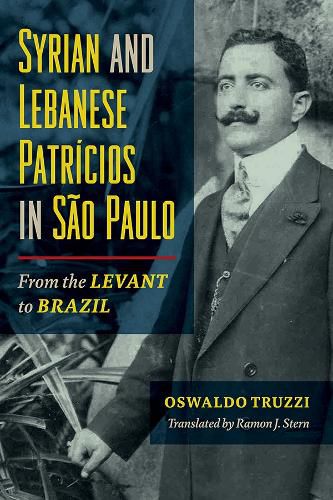Readings Newsletter
Become a Readings Member to make your shopping experience even easier.
Sign in or sign up for free!
You’re not far away from qualifying for FREE standard shipping within Australia
You’ve qualified for FREE standard shipping within Australia
The cart is loading…






Syrian and Lebanese immigrants to Brazil chose to settle in urban areas, a marked contrast to many other migrant groups. In Sao Paulo, these newcomers embraced new lives as merchants, shopkeepers, and industrialists, making them a dominant force in the city’s business sector.
Oswaldo Truzzi’s original work on these so-called patricios changed the face of Brazilian studies. Now available in an English translation, Truzzi’s pioneering book identifies the complex social paths blazed by Syrian and Lebanese immigrants and their descendants from the 1890s to the 1960s. He considers their relationships to other groups within Sao Paulo’s kaleidoscopic mix of cultures. He also reveals the differences–real and perceived–between Syrians and Lebanese in terms of religious and ethnic affinities and in the economic sphere. Finally, he compares the two groups with their counterparts in the United States and looks at the wave of Lebanese Muslims to Sao Paulo that began in the 1960s.
$9.00 standard shipping within Australia
FREE standard shipping within Australia for orders over $100.00
Express & International shipping calculated at checkout
Syrian and Lebanese immigrants to Brazil chose to settle in urban areas, a marked contrast to many other migrant groups. In Sao Paulo, these newcomers embraced new lives as merchants, shopkeepers, and industrialists, making them a dominant force in the city’s business sector.
Oswaldo Truzzi’s original work on these so-called patricios changed the face of Brazilian studies. Now available in an English translation, Truzzi’s pioneering book identifies the complex social paths blazed by Syrian and Lebanese immigrants and their descendants from the 1890s to the 1960s. He considers their relationships to other groups within Sao Paulo’s kaleidoscopic mix of cultures. He also reveals the differences–real and perceived–between Syrians and Lebanese in terms of religious and ethnic affinities and in the economic sphere. Finally, he compares the two groups with their counterparts in the United States and looks at the wave of Lebanese Muslims to Sao Paulo that began in the 1960s.